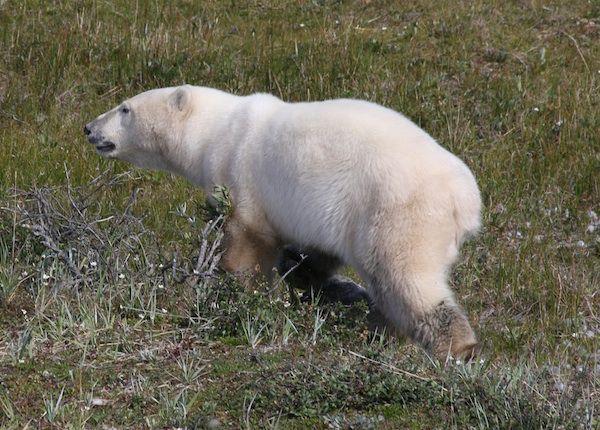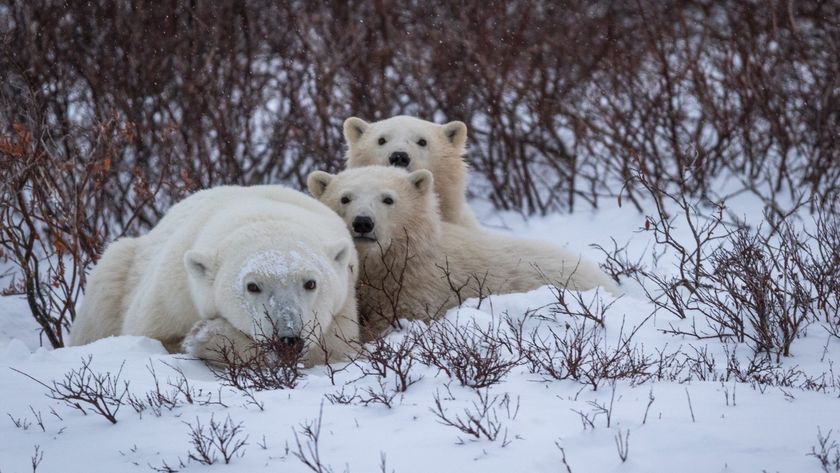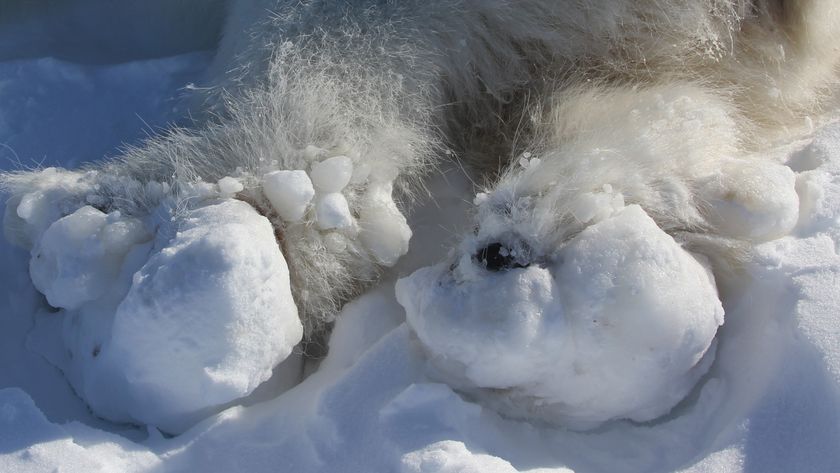In Warming Climate, Geese & Polar Bears Strike a Balance

The polar bear is the poster child for species threatened with extinction by climate change. But a new study finds that the Arctic animals may get a reprieve in the form of an abundant supply of eggs from snow geese.
The findings aren't bad news for snow geese, either, the researchers report online in the journal Oikos. No matter how many goose eggs polar bears consume, the geese are safe from extinction. That's because the overlap, or match, between snow goose nesting and polar bear hunting is limited to a small window of time, according to the study.
Polar bears are a vulnerable species, according to the International Union for Conservation of Nature, and experts worry that shrinking sea ice will keep the bears away from their spring prey of seal pups. Using a computer model, researchers from the American Museum of Natural History (AMNH) found that goose eggs could replace seal pups as polar bears' main meal.
Eggs on the menu
Previously, snow geese finished their nesting and hatching before polar bears came ashore from breaking sea ice to hunt. Now that sea ice is breaking up earlier, however, some bears have begun to forage amidst snow goose rookeries. That practice led to concerns that the bears would plow through the egg supply, driving the geese to extinction before running out of food themselves.
But according to the new model, geese can breathe easy.
"Even if the bears eat every egg during each year of complete 'match,' our model shows that periodic years of mismatch will provide windows of successful goose reproduction," study researcher Robert Rockwell, a research associate at AMNH and a professor at the City University of New York, said in a statement.
Sign up for the Live Science daily newsletter now
Get the world’s most fascinating discoveries delivered straight to your inbox.
Good for the goose...
The model took into account breaking sea ice, the movement of bears, the migration of geese and the birds' laying period. The goose migration is based on the amount of light during the day, the researchers report, while bears move in response to thawing ice. That means goose patterns of movement will remain more constant than the bears' migration.
Currently, the overlap gives an advantage to polar bears looking for eggy meals, but increased variability in melting driven by climate change will lead to a greater mismatch, which is good for geese, the researchers say.
"In this case, periodic mismatch is good, because it keeps geese from going extinct and allows polar bears to eat," Rockwell said. "Are polar bears adaptable? Of course. This could be a nice stable system. The geese aren't going to go away, and they are a nutrient resource for the bears."

Stephanie Pappas is a contributing writer for Live Science, covering topics ranging from geoscience to archaeology to the human brain and behavior. She was previously a senior writer for Live Science but is now a freelancer based in Denver, Colorado, and regularly contributes to Scientific American and The Monitor, the monthly magazine of the American Psychological Association. Stephanie received a bachelor's degree in psychology from the University of South Carolina and a graduate certificate in science communication from the University of California, Santa Cruz.











